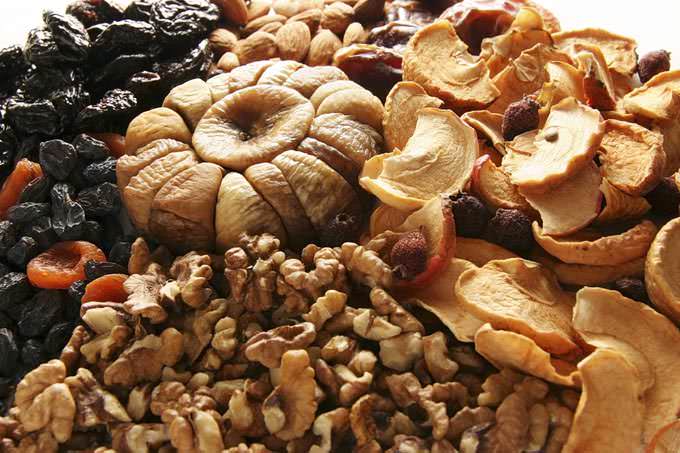
1. Dried Fruit Mixtures or Trail Mix
A bag full of fruit and nuts will definitely give you an energy boost, and trail mix is a highly convenient snack due to its portability.
Further, with all the nutrients and protein included in a bag of trail mix, a modest portion is certainly a good addition to the average person’s diet.
However, if you’re watching your weight, you should be careful with bags of trail mix and dried fruit.
Although they are healthy and low-calorie in concept, these bags usually contain an unexpectedly large amount of sugar.
In addition, the large amount of nuts found in trail mix can lead to ingesting more than the ideal amount of fat. While the fat in nuts is a healthy kind that promotes heart health, it can spell trouble for your waistline if you’re trying to drop a few sizes.
To reduce your calorie intake, look out for mixtures that aren’t coated in dried sugar or that don’t contain any chunks of milk chocolate and eat small portions.
You can also consider making your own trail mix with nuts and berries that are particularly healthy (such as cranberries and macadamia nuts). Sunflower or pumpkin seeds can also make a nice addition.
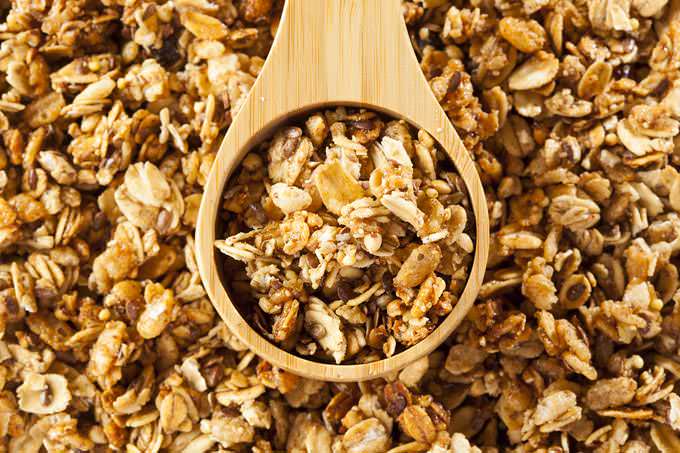
2. Granola
Granola can be very good for you since it contains whole oats (which are capable of boosting cardiovascular health by helping to lower cholesterol levels).
Oats may even improve immune system function, aiding your body in the fight against invading bacteria and viruses.
However, granola also tends to be very high in calories, and is often prepared with large servings of butter or oil.
You may be shocked to learn that a typical serving of granola will provide you with 400 calories, which is more than a dieter should be eating at breakfast or lunch. The sugar content can be pretty high as well, contributing to unhealthy blood sugar spikes and hindering weight loss.
As a result, you must be vigilant with portion control when partaking of nutrient-rich granola, and once again try to forgo versions that add things like chocolate chips.
Further, check the consistency of your granola; if it is particular sticky and clumpy, then it probably contains more butter or oil than is necessary. Once you’ve chosen a relatively healthy granola, try to combine it with some fruit or low-calorie cereal in order to spread out calories and reduce the amount of granola you’re actually eating.
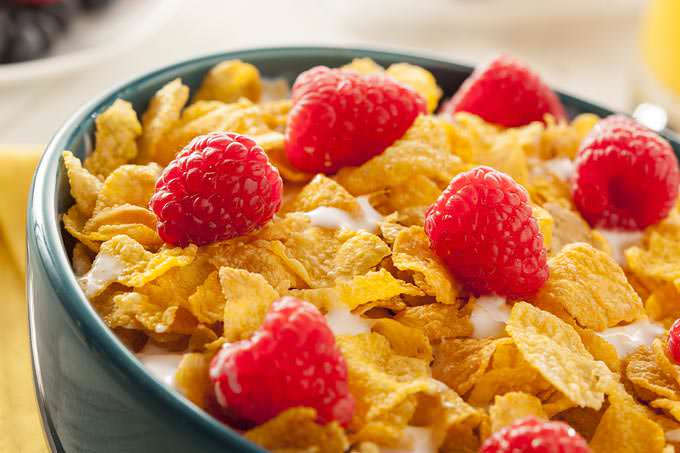
3. Cereal
You probably know that a lot of cereals that are designed to appeal to children are actually packed full of refined sugars that only encourage childhood obesity. Disappointingly, even healthier adult cereals can be chock full of hidden calories.
If you up all the sugar-coated, honey-glazed goodness in your favorite box, you will probably realize that you have more calories than you want.
Further, remember that once you pour that cereal into a large bowl with a good amount of milk, you could be blowing the calorie count on your breakfast well past the information printed on the box.
The first step is to locate the healthiest cereals, which are often tastier than you might expect. Next, make sure that you are not having more than you should; dieticians suggest using a measuring cup to serve cereal for better portion control.
Of course, another option is to change your breakfast routine in order to further reduce your intake of calories and sugar in the morning. For example, you could consider making a healthy omelet with eggs and fresh vegetables (such as sliced peppers and onions), heating up some whole grain porridge, or having a natural yogurt with slices of banana.
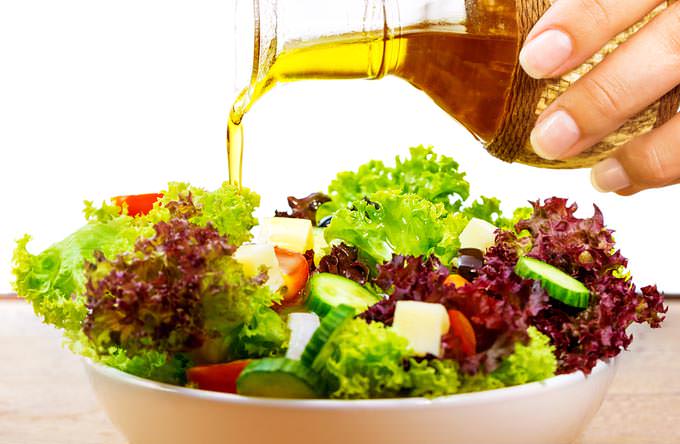
4. Salad
Dieters will often order or make a salad when trying to lose weight, but if this is common for you then you should be very careful what you pair with your greens.
Once you’ve added meats, nuts, seeds and dressings, you can easily have a salad weighing in at over 1,000 calories.
For example, one of the biggest offenders is the Caesar salad, which can masquerade as a diet food but will actually provide you with more calories and fat than most standard lunches or dinners.
In fact, a Caesar salad dressing is normally close to 400 calories per serving, and could contain more than 30 grams of fat.
The safest way to approach salads is to make them yourself. In particular, you should use plenty of healthy vegetables, and pick romaine lettuce over iceberg (as the former contains more vital nutrients and is better for your body). If you want to add meat, lean chicken breast is the best call.
You can also make a delicious dressing with extra virgin olive oil, salt, pepper, oregano and lemon juice, but be careful to use no more than a tablespoon of any dressing when you’re trying to eat salads to lose weight.
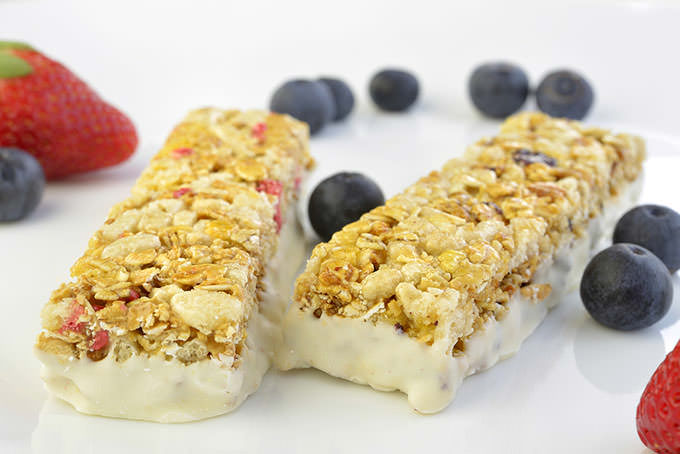
5. Energy Bars
A go-to snack for many dieters, some energy bars do provide a good boost of many essential nutrients. However, they also contain an extra 200 to 300 calories.
Some of the unhealthiest energy bars may even contain up to 500 calories in an extremely small package, using up a lot of your recommended daily intake while nevertheless leaving you feeling hungry for something more.
Make sure you account for added calories each day if you’re going to make a habit of eating high calorie energy bars. An even better idea is to be highly selective about your energy bars, scrutinizing the label to find out the calorie content and the exact amounts of sugar and fat in your snack.
Healthier energy bars will provide you with no more than 200 calories per serving, and should contain at least five grams of protein to keep you feeling full and satisfied for several hours.
Alternatively, you may want to consider cutting energy bars out of your diet altogether. Ideal replacements include slices of seasoned cucumber, carrot sticks that can be dipped in reduced fat humus, a small handful of nuts and seeds (with no added sugar), or a slice of wholegrain toast.
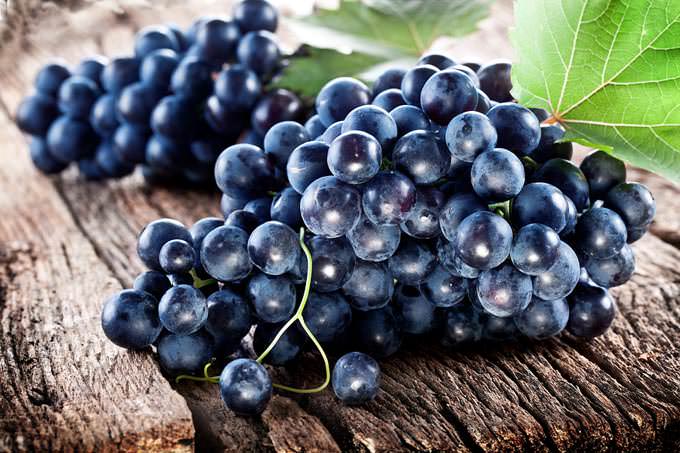
6. Grapes
Fruit is an invaluable source of nutrients that help to keep you feeling good, and there is evidence that people who eat the most fruits and vegetables even have longer lifespans.
Further, many fruits are bursting with fiber, boosting digestive health, temporarily increasing your metabolism and effectively repressing your hunger pangs until your next meal.
In spite of this, it is important to remember that some fruits contain so much sugar that they may be wrecking your diet without your knowledge.
For example, some grapes weigh in at around 30 calories each; if you pop four of these grapes, you’ll have eaten a 100 calorie snack without doing very much to combat your hunger.
If you want a trim figure and have quite a bit of fat left to lose, save the grapes for a sweet treat on occasion (or remove them from your diet altogether). The same goes for cherries, pomegranates, mangoes, figs and tangerines.
However, you can still make sure that you eat plenty of fruit while watching your weight. Good examples of fruits that contain less sugar include lemons, limes, raspberries, blackberries and cranberries. You can also enjoy strawberries, peaches, nectarines, blueberries, apples, grapefruits and fresh apricots in moderation.
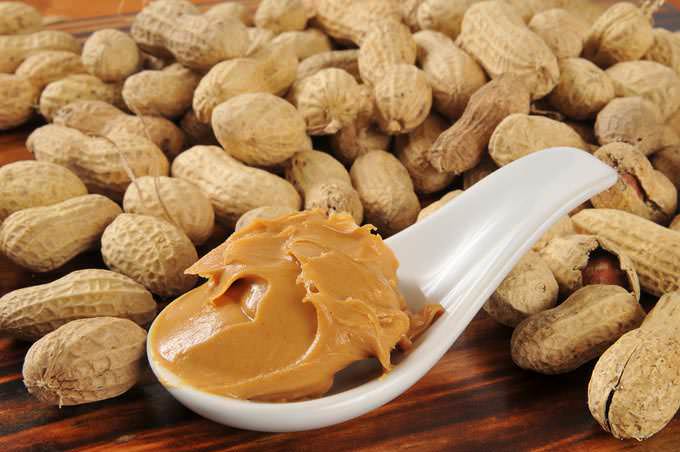
7. Peanut (and other nuts)
Peanut butter is often considered a superior food. After all, you provide yourself with truly enormous amounts of protein by having just a single spoon of the stuff.
However, all of that protein comes with a cost, and your caloric intake will add up very quickly when you spread peanut butter on a sandwich.
It is smart to keep your peanut butter intake to a tablespoon or so, and avoid slathering healthy options (such as celery) in half a jar of peanut butter when you want to have a healthy mid-morning snack.
In addition, it is in your best interests to be careful about nuts more generally. Like fruits and vegetables, nuts do help you to feel full and can aid in suppressing your cravings for less healthy foods, but they are all high in fat and can therefore undermine your attempts to shed excess weight (or even cause you to gain more weight).
The nuts that are highest in fat are peanuts and cashews, while a serving of walnuts, almonds or macadamia nuts will contain a more modest amount. When snacking on any nuts while on a diet, you should make sure that you never have more than a handful.
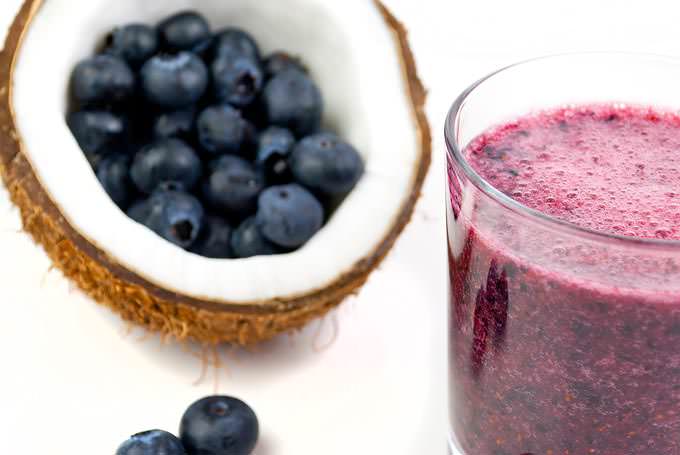
8. Smoothies
While most people will congratulate themselves for choosing to order a smoothie over a soda or a candy bar, the truth is that most smoothies contain at least 350 calories, and some of them can actually top 1,000 calories.
To make matters worse, the smoothies that you buy in restaurants or grocery stories will often contain heaps of extra sugar that your body doesn’t need, and many manufacturers will use juice from concentrate (instead of fresh fruit), thereby minimizing the health benefits of your smoothie.
If you order a smoothie, make sure that you ask for the smallest available serving and specify that you would prefer to have reduced fat yogurt instead of cream, ice cream or full fat milk.
If you’re downing smoothies daily, you might want to invest in a good quality blender or smoothie maker and just make the drinks yourself. This way, you will have the freedom to select low calorie options and opt for fresh ingredients.
Further, don’t forget that you can use some of the healthiest vegetables to make surprisingly tasty smoothies that are packed with amazing nutrients. For example, you can make a healthy green smoothie with spinach, kale, avocado and apple juice.
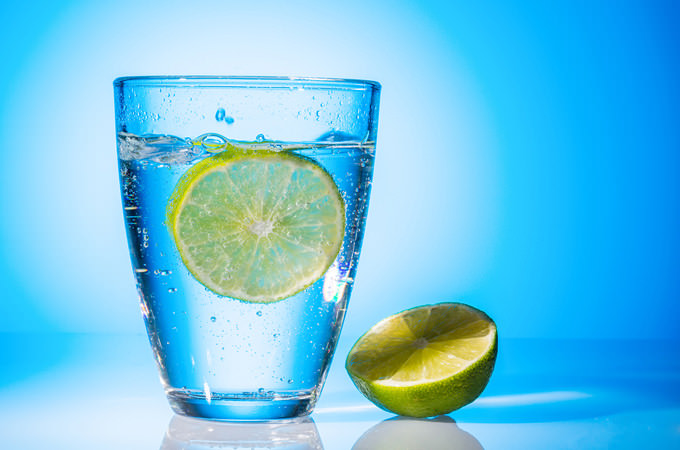
9. Vitamin Water
Although buying a bottle of vitamin water might look like a healthy alternative to picking up a sugary soda, you may be surprised to learn that most of these drinks contain up to 50% as much sugar as a typical soda.
People who don’t know this can undermine their attempts to lose weight by gulping down multiple servings of vitamin water per day, thinking that this habit is harmless.
Many experts on nutrition firmly believe that any benefits provided by the vitamins in the water are offset by the large amount of refined sugars that come with them.
When it comes to getting the right vitamins, you are better off having a balanced diet and getting most of your vital nutrients from fruits and vegetables.
If you’re still concerned about your vitamin intake, you can always opt to take a daily multivitamin (though it’s always worth discussing this with your family doctor in there is any medical reason for you to avoid any particular vitamins or supplements).
Further, to ensure that you successfully lose weight, it is best to choose water over all other drinks. Poured over ice and replaced with a splash of lemon or lime, it can be very refreshing.
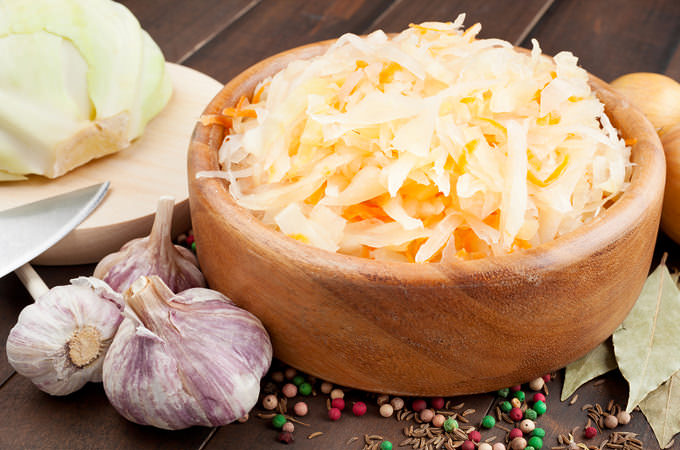
10. Coleslaw
Dieters are often blissfully unaware of how bad coleslaw can be, as restaurants often choose to serve it as an accompaniment to a side salad (giving the impression that coleslaw is a healthy food as well).
It is true that there are some health benefits that come with coleslaw due to vegetable content, the risks outweigh the benefits thanks to the huge servings of mayonnaise that are almost always added to coleslaw.
Surprisingly, an average serving of coleslaw is over 250 calories, and a whopping 20g of this serving is made entirely from fat. When it comes to ordering at a restaurant, you would be wise to ask for you meal to be served without the coleslaw, or to pick an alternative side dish if possible (such as mixed vegetables or a simple salad on its own).
When cooking at home, you have the freedom to create a healthier type of coleslaw that will taste good without adding inches to your waistline. All you need is reduced fat mayonnaise, cabbage, chopped carrots and a squeeze of lemon juice. Some dieters even try to make coleslaw with fat free yogurt, though (as we will see) you need to be careful when choosing a yogurt as well.

11. Reduced Fat Yogurt
There are a few reasons why a serving of reduced fat yogurt can be really good for your body. In particular, it is typically very high in both protein and calcium, which give you plenty of energy and promote healthy bones.
Yogurt can also help you to feel full between meals, and can be used as a substitute for cream in many popular dishes.
However, the other side of the coin is the reduced fat yogurt does not taste particularly good on its own, so manufacturers will tend to add extra sugar to make the yogurt more palatable.
Indeed, many of these supposedly healthy yogurts will provide you with an enormous 30g of sugar, undermining your weight loss efforts without any obvious warning.
You should be wary of certain yogurts with reduced sugar content for a similar reason, as they will often be loaded with fat to create a creamier texture and flavor. When you choose yogurts, be careful to read the nutritional content printed on their labels. In many cases, you will find that the healthiest yogurt isn’t a ‘diet’ yogurt at all, but rather one that contains a balance of relatively low fat and relatively low sugar content.
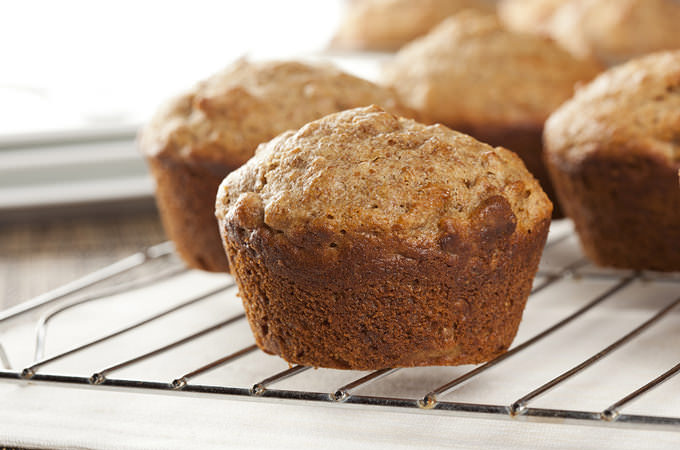
12. Bran Breakfast Muffins
Bran muffins are extremely high on fiber, which is known to boost digestive health and help you feel fuller for longer when you’re a diet.
As a result, you could be forgiven for assuming that a bran breakfast muffin is an excellent choice in the morning, especially if you’re picking up breakfast at a coffee shop (where carrot cake and lemon drizzle slices can tempt you).
Unfortunately, the average bran breakfast muffin is not too different in nutritional content to a regular slice of cake. Most will contain at least 500 calories, and may contain up to 20 grams of fat into the bargain.
So, at the end of the day, they are really not much better for you than the tastier muffins that you ignored when trying to stick to your diet plan.
If you want to get all the health benefits of a diet that is high in bran without paying the price that comes with these breakfast muffins, bran flakes are a good option (as long as you stay away from whole fat milk when preparing this breakfast). Alternatively, a healthy yogurt can be improved with a handful of dry bran flakes and a few pieces of dried fruit.

13. Reduced Fat Milk
Due to the fact that reduced fat milk is healthier than whole fat milk when it comes to calorie content as well as fat content, many dieters make the mistake of assuming that they can have as much reduced fat milk as they like.
In reality, reduced fat milk is not that good for you, as just one cup of it will provide you with close to 140 calories, and the saturated fat content is only reduced by fewer than 50%.
This can really add up if you’re adding reduced fat milk to coffee, tea, cereal and other daily staples.
If you are serious about weight loss, you need to monitor your intake of reduced fat milk, putting just a splash in your cup of tea or coffee (and remembering not to drown your morning cereal in milk). Alternatively, if you think that you cannot do without your current intake of milk, you can make the move to fat free milk, which contains a substantially lower amount of calories.
In spite of this, the sugar content is a little higher than the sugar content of reduced fat milk, so you will still need to be careful if you want to make sure that you successfully lose weight.
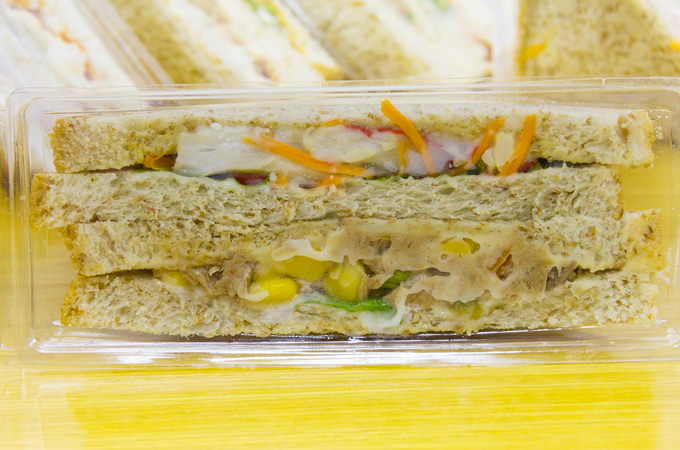
14. Packaged Sandwiches
If you don’t look at the nutritional content of a sandwich before buying at a grocery store on the way to work, you would be forgiven for thinking that it might be quite healthy if it appears to have very few ingredients.
However, packaged sandwiches are almost all made with full fat butter, and even the ones that include protein-rich lean meat will often have layers of mayonnaise.
To make matters worse, it can be hard to find many sandwich options that use brown bread, and white bread is made from refined grains that promote weight gain and cause rapid but brief spikes in blood sugar level.
As with many other meals, it is likely that the healthiest sandwich will be one that you have made in your own home. Start out with slices of brown bread, and then add a light coating of some type of reduced fat spread that is less unhealthy than regular butter.
Next, choose a filling that will be satisfying without undermining your diet (such as thin slices of chicken breast), and top it off with as many vegetables as you like. The end result will be fresher, tastier and much healthier than any sandwich from a store.
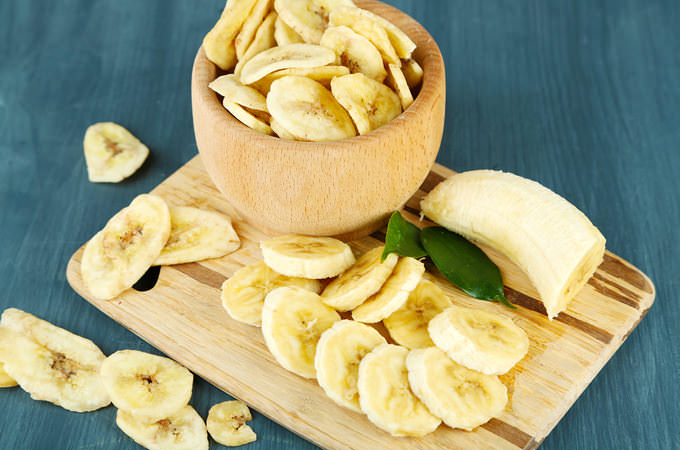
15. Banana Chips and Apple Chips
You may think that you’re getting a decent dose of nutrients and sticking to your diet if you pick up a packet of banana or apple chips instead of going straight for a candy bar. However, the truth is that these snacks are simply terrible for you.
For example, if you eat a fresh apple then you’ll be consuming an average of less than 70 calories and around 0.2 grams of fat. In contrast, a serving of apple chips is packed with 140 calories and 7 grams of fat.
Similarly, while a fresh banana comes in at least than 100 calories and contains just 0.3 grams of fat, a serving of banana chips is deep fried and therefore contains around 150 calories and a nauseating 10 grams of fat.
When it comes to bananas and apples, then, fresh is always the best. Meanwhile, if you want to stick to your diet while still enjoying a few treats, there are many snacks that are better for you than fried banana chips or apple chips (and that are a lot more enjoyable to consume). Good examples include reduced fat potato chips, small servings of nuts and seeds or a little wholemeal popcorn.

